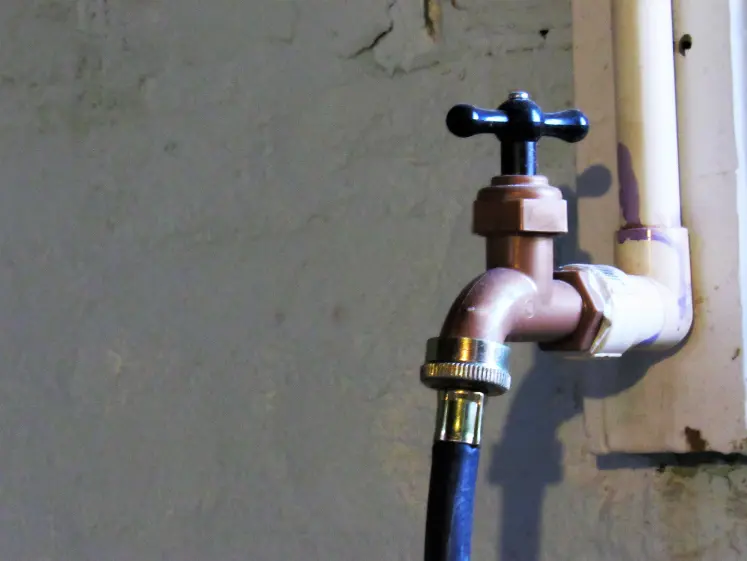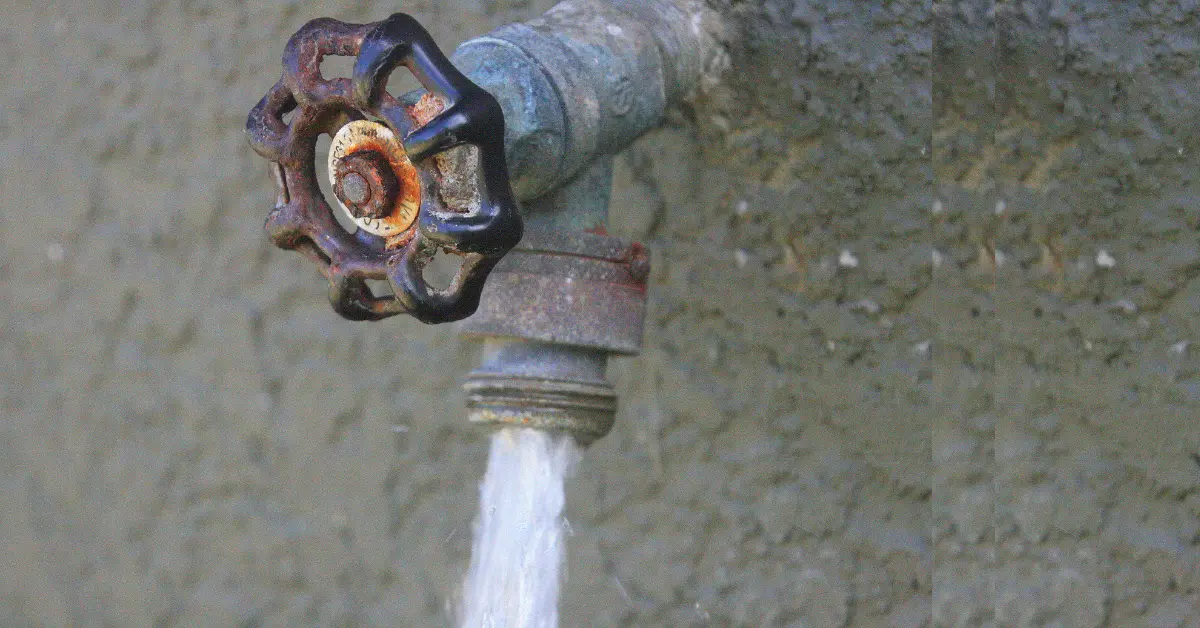After a long winter, one of the first signs of spring is being able to use your outdoor faucet again. However, you twist the handle and are frustrated to see the water barely dripping out from your outside faucet.
This common issue of sudden low water pressure from outdoor faucets usually signals some type of blockage or failure within the plumbing. It may also happen from normal mineral deposit buildups from hard water to corroded washers and valves that need replacement. Sometimes a simple closed internal shut-off valve could be the culprit.
If you’re experiencing low water pressure in your outdoor faucet, use effective ways to fix the low water pressure in your outdoor faucet. These solutions are easy to follow and implement.
- Why Is Water Pressure Low on Your Outside Faucet?
- How Do I Increase Water Pressure In My Outdoor Tap?
- Does a Longer Hose Reduce Water Pressure?
- What Size Garden Hose Is Best For Low Water Pressure?
- Does a Smaller Hose Increase The Water Pressure of Outdoor Faucet?
- Why Is Water Pressure Low In One Outside Faucet Only?
Why Is Water Pressure Low on Your Outside Faucet?
Mineral Deposit Buildup
One of the most common culprits of decreased water flow in outdoor faucets is a build-up of mineral deposits from hard water.
Over months and years of use, calcium, magnesium, and other minerals in the water supply leave behind residue within pipes, aerators, valves, and particularly small nozzle openings of the outside faucet.
This scaling leads to clogs and blockages that decrease smooth water flow, even if your main home supply offers adequate pressure.
Worn Out Washers and Cartridges
The frequent seasonal freezing and thawing, along with outside spigot use leads to extra wear and tear. The internal components of the outdoor spigot like rubber seals and washers as well as plastic or brass cartridges eventually become corroded and warped.
As these small but critical parts malfunction over years of use, they no longer maintain correct water flow, allowing leakage and pressure drops.
Closed Shut-Off Valves
Outdoor spigots typically have separate interior shut-off valves specifically for seasonal winterization as well as main water supply shut-offs. It’s easy to accidentally leave them turned off into spring.
Kinked Hoses
You would think a flexible garden hose could bend without issue. But kinking the hose tightly actually blocks good water flow for your outdoor faucet.
When a hose gets folded up or tangled for storage, the inside width gets crushed at sharp bends. This squeezes the path water needs to flow through freely.
Later, when you reconnect the kinked hose and turn the water on, less can pass through those crushed spots. So pressure and water volume drop a lot.
How Do I Increase Water Pressure In My Outdoor Tap?

Whenever I get low water pressure from my outdoor faucet, I try these fixes to get high water pressure, and these work for me.
Removing Mineral Buildup
- Turn off the water supply to the outdoor faucet and open the faucet to release any remaining water.
- Unscrew the aerator or screen assembly at the faucet outlet. Inspect and remove any visible mineral deposits clogging small openings.
- You should soak the removed aerator in white vinegar overnight to dissolve more stubborn scaling.
- Use a small brush or pick to clear any corrosion inside the faucet nozzle or main housing openings.
- Replace the aerator component and turn the water supply back on to test flow.
Replacing Screens
- Same process as above for accessing outdoor faucet components.
- Check screens inside threaded fittings or washers for debris accumulation and clean or swap out.
- Ensure the screen and gasket seating align correctly and tighten the faucet back together.
Replacing Damaged O-Rings
- Shut off the water valves of the outdoor faucet.
- Disassemble the locking outdoor faucet components with a screwdriver to access to interior housing.
- Locate O-rings sealing key junctions. Check out any visibly cracked or compressed rings, if you find any cracks, install new O-rings.
- Grease new O-rings slightly to aid seating and prevent future drying out.
- Re-fasten the faucet handle hardware and test the renewed water flow pressure.
Tightening Loose Connections
- Close any isolation valves that supply just the outside spigot itself.
- Examine all connections for leaks indicative of looseness. Hand-tighten fittings between the supply line, valves, and main spigot body.
- For compression fittings, give an additional half-turn with pliers on nut connectors to increase security.
- Restore water flow and check for drip reduction success. Further pipe sealant or part replacement may still be needed.
Does a Longer Hose Reduce Water Pressure?
Yes, a longer garden hose will reduce water pressure compared to a shorter hose. There are a few reasons why:
- The longer the hose, the more friction occurs between the water and interior walls of the hose. This friction reduces overall water pressure, especially noticeable with lengths over 50 ft.
- More hose equals more turns, kinks, and elevation changes. Each of these forces the water to change direction, running into resistance that further lowers pressure.
- Longer lengths spread out a fixed volume of water over an expanded area, naturally diffusing pressure at the endpoint. Even without leaks, less water fills larger capacities.
- Added fittings, couplings, and stops provide junctions for potential leakage and pressure drops. Minimize connections.
- Heavy water weight drags down and compresses sections of the hose, impeding flow, especially in the middle sections. Requires stronger reinforcement.
What Size Garden Hose Is Best For Low Water Pressure?
The best size garden hose to use in low water pressure situations would typically be a 5/8 inch or wider diameter hose. Here are some tips on choosing the optimal hose:
- Wider diameters are less prone to pressure and flow restrictions. A 5/8, 3/4, or 1-inch hose allows more water throughput.
- Shorter length hoses, from 25 to 50 feet, have less friction loss and allow more pressure. Avoid excessively long 100+ ft hoses.
- Materials like dual-ply or reinforced rubber can withstand higher pressures without collapsing. Metal and fabric hoses resist kinking too.
- Look for hoses rated for higher max PSI, up to 500+ psi burst pressure for durability.
- Use wider diameter fittings, swivels, and shut-off nozzles rated for the larger hose capacity.
Does a Smaller Hose Increase The Water Pressure of Outdoor Faucet?

Using a skinnier hose can sometimes increase water pressure from your outdoor faucet. But it can also decrease the overall water volume coming out. This depends on your situation.
Narrower hoses make it tough for lots of water to pass through quickly. Short and wide works best for maximizing water flow. Long and thin will spray harder but reduce the amount.
The length, width, and material of your hose impact how much reaches the other end. So does home water pressure. Most hoses list maximum pressure capacity.
Consider what you need the water pressure and flow for. Gentle garden watering might enjoy a narrower stronger spray. But filling a pool requires volume over pressure.
In most cases, wider diameters send more water volume down the hose. Shorter, bigger garden hoses tend to offer the optimal balance. But experiment to see what target pressure versus water flow rate suits your purposes.
Check also – Drain Outdoor Faucet For Winter In Minutes
Why Is Water Pressure Low In One Outside Faucet Only?
The most frequent problem is buildup and gunk inside the faucet nose itself. Chunks of mineral deposits or small bits of debris get stuck in key parts like aerators, screens, washers, and valves. This clogs up the free flow. Fortunately, cleaning or replacing these removable faucet parts is pretty easy.
Another issue happens when the shut-off valves feeding water to individual fixtures get accidentally closed too much. These valves resemble outdoor spigots themselves. Locate yours and turn them completely counterclockwise. Open valves mean restored pressure.
So before assuming major pipe problems, check the specific spigot issues first. Problems localized to only one outdoor faucet likely stem from blockages or closures in that fixture itself rather than home plumbing.

James Lewis is a seasoned plumber and faucet enthusiast who shares his expertise on Faucetsavvy.com. With over 15 years of experience in the plumbing industry, he’s passionate about helping homeowners find the perfect faucet for their needs. He’s also dedicated to empowering DIY enthusiasts with the plumbing knowledge and skills needed to repair and maintain their faucets.
Recommended By Faucetsavvy's Team
Best Kitchen Faucets of 2025: Sleek, Durable & Worth Every Penny Check Our Review

